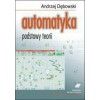- Out-of-Stock



Dębowski Andrzej
ISBN 978-83-204-3412-5
Author: Dębowski Andrzej
Publisher: WNT
About the book
The manual contains basic messages from automation and includes 6 chapters. The first three chapters are devoted to the analysis and synthesis of linear continuous systems. The fourth chapter concerns discrete systems. The fifth chapter contains a discussion of the basic problems in the analysis of non-linear systems. The last, sixth chapter of the book deals with the design of logic circuits. According to the subtitle of the book, it has a very practical character and contains many computational examples illustrating the issues discussed in a didactic manner. The considerations are conducted in a clear and unambiguous way, from basic to slightly more complex issues. This is due to the author's extensive experience as a long-term academic teacher and as a practice engineer. The guide is intended for students studying at technical universities, in particular in such fields of study as automation and robotics, mechanics, electrical engineering
Table of Contents
PREFACE
1. INTRODUCTION
1.1. Basic concepts and definitions
2.1. Classification of control systems
2. LINEAR CONTINUOUS SYSTEMS
2.1. The concept of a linear element
2.2. The classic mathematical description of the dynamic process
2.3. Description of the dynamics of processes by the state space method
2.4. Transforming block diagrams
2.5. Stability of linear continuous systems
3. QUALITY OF AUTOMATIC REGULATION SYSTEMS
3.1. The concept of quality and methods of correction of automatic control systems
3.2. Static and astatic regulation.
3.3. Basic types of regulators with continuous operation
3.4. Methods for selecting the settings of regulators
3.5. The use of serial correction to increase the stability reserve
3.6. The use of correction in feedback to create regulators
4. LINEAR DISCRETE ARRANGEMENTS
4.1. Discrete functions and differential equations
4.2. Transformation Z and its application to solving equations differential
4.3. Description of the dynamics of linear discrete systems
4.4. Discrete Transmission
4.5. Discrete control systems
4.6. Stability of discrete linear systems
5. ILLUSTRATIVE SYSTEMS
5. l. Static characteristics of non-linear systems
5.2. Methods of dynamics analysis of nonlinear systems
6. LOGIC SYSTEMS
6.1. Combination and sequential logic circuits
6.2. Elements of Boolean algebra.
6.3. Logic functions.
6.4. Basic logical elements.
6.5. Designing combinational circuits
6.6. Designing sequential circuits
BIBLIOGRAPHY
INDEX
No product available!
No product available!
No product available!
No product available!
No product available!
A needle with a diameter of 0.4 mm, designed for cleaning the nozzle in 3D printers. It allows you to get rid of the remnants of the material after printing and to remove the filament in case of clogged nozzle
No product available!
AVT kit for self-assembly of the proximity switch. AVT1980 B
No product available!
No product available!
No product available!
No product available!
No product available!
No product available!
Shielded FTP category 5E Ethernet network cable with RJ45 plugs. Lanberg PCF5-10CC-0500-O
No product available!
Universal Panasonic Eneloop R6/AA and R03/AAA battery box in blue. Panasonic BQ-CASEL/1E
No product available!
No product available!
Camera with OV7725 CMOS sensor with a resolution of 640x480px. It communicates via a parallel interface. ArduCAM U6038
No product available!

Dębowski Andrzej
